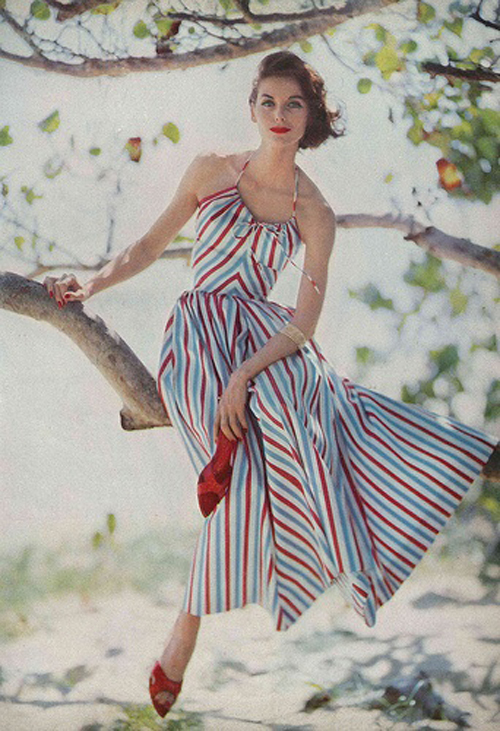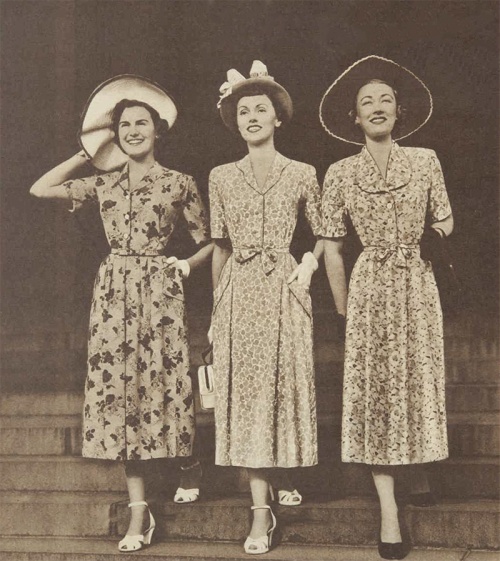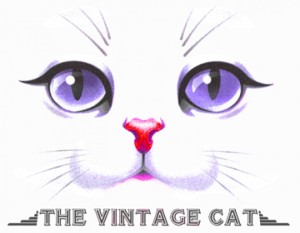Who doesn’t love a little bit of leopard print (or A LOT of leopard print?). It’s always great to have solid key pieces in your wardrobe because they are extremely versatile. The colors of these key pieces also must be neutral enough to mix and match… BUT there a few essential prints that are great to have in your wardrobe. These prints are very popular whether they are vintage, reproduction vintage or modern clothing, so it makes it that much easier to get your hands on them!
Here are six prints that are a essential in every gals wardrobe. You’ll probably be surprised with the fact you’ll have many of these!
1. Leopard
This print is wild and sexy! Humans were knows to wear actual leopard skins way back when we were hunters and for power. Then, people of wealth and power were able to afford such a luxurious privilege. In the late 1940s, Christian Dior changed the symbolism of the print by producing luxurious fabrics and making fabulous dresses for all women to enjoy. He said, “But to wear leopard you must have a kind of femininity which is a little bit sophisticated. If you are fair and sweet, don’t wear it.” Every season, you will see leopard, it can be tacky at times, but adding a leopard scarf or cardigan, can add a whole new look and feel to your ensemble.

Life Magazine Leopard Print overload!

Lovely red and leopard combo! Perfect way to add a touch of print to a simple outfit.
photo source: Pinterest
2. Polka Dots
Polka dots are timeless! From the early Disney’s Minnie Mouse sporting the cute over sized bow with polka dots, this patterns has been ultra popular since the early 1920s. It’s lovely because a simple dress with the pattern is instantly beautified and looks chic. I recently bought a 70s does 40s black dress with white polka dots. It’s very simple, but with the matching belt and the prominent white polka dots, the dress makes a statement.

photo source: Isabel Santos Pilot

Jean Patchett in polka dots
photo source: Isabel Santos Pilot
3. Stripes
Ahoy! Stripes definitely add a nautical feel. Coco Chanel is the one who made the nautical type of stripe very popular in the early part of the 20th Century, and since then they’ve not left the fashion scene. Stripes can be horizontal, vertical, or chevron (there are more variations, just not sure of their names!). They can also come in different thickness and increments. I’ve never been too crazy about horizontal stripes, only if the garment is primarily one color and has thin stripes of a darker color. Reason being that horizontal stripes can make you look bigger than you actually are, and rarely do any of us want that!

Doris Dodson Ad 1960
photo source: vintage everyday

Vogue 1954
photo source: Pinterest
4. Floral
Flowers have always been seen as delicate and a reflection of femininity. Lovely finding 1930s silk long dresses printed with all sorts of flowers. From the 1940s to the 1960s had an amazing array of dresses with flowers throughout. The late 60s in to the 70s was the time of flower power, all through the 20th century and in to the modern day, we can expect this print to stay!

Le Petit Echo De La Mode cover 1947
photo source: Isabel Santos Pilot

1950s Adelyn Spring Floral Dresses
photo source: Bess Georgette
5. Plaid/Tartan
Though I’ve never been too fond of this pattern, I think it looks great in form of a skirt, jacket, or trousers. Of course if I were to stumble upon a lovely silk shirt with this pattern, I wouldn’t say no. Since the Victorian era, family clans have been wearing specific tartans, which no other family or anyone else may have. But, the pattern has existed since before the 16th Century in Scotland.
The ones we see in shops are called “free tartans” which are okay for everyone to wear. There are up to 7,000 variations of this pattern and new variations are developed every year, so there’s something for everyone.
Everyone of course can recognize the Burberry pattern. Their distinct tartan pattern is actually the most copied trademark!

Plaid in Vogue 1957
photo source: Pinterest

photo source: LIFE Magazine 1958 issue (This photo has a bit of Houndstooth as well.)
6. Houndstooth
Houndstooth checks originated in the Scottish Lowlands, and were made in woven wool fabric. In high end fashion, one of the early references to this type of fabric came from a clothier from NYC in 1880s.
This type of pattern can now be found across all types of fabrics, including silk (I’ll need to do a separate post on my love of silk fabric!) Fun fact: if the pattern is on a small scale, its called puppytooth. Cute!

Lusha Nelson in Houndstooth Vouge 1935
photo source: Conde Nast Store (you can actually buy a print of this lovely photo!)

photo source: Pinterest
I’d like to do a separate post on novelty fabrics and vintage novelty items from yesteryear in general. Having moved to the UK, I am finding it difficult to search online for vintage, both ebay and etsy keep getting my location confused. I may need to sign up with new accounts. Anyone in the UK have any recommendations for etsy/ebay shops to get me started?
What is your favourite print out of these six?
Until next time,
xx



I’m a massive fan of prints and love finding a cute unusual pattern. Really want to buy some fabric and have some dresses made!
As for vintage stores in the UK, try https://www.google.co.uk/search?q=dolly+dagger+clothing&ie=UTF-8&oe=UTF-8&hl=en&client=safari
Have fun!
Thanks so much for the link! Lovely boutique! I’ll definitely be needing a wardrobe refresh this Spring! 🙂 I too want to get some fabrics and try to make some bits, but I fear it looks easier than it is! hehe